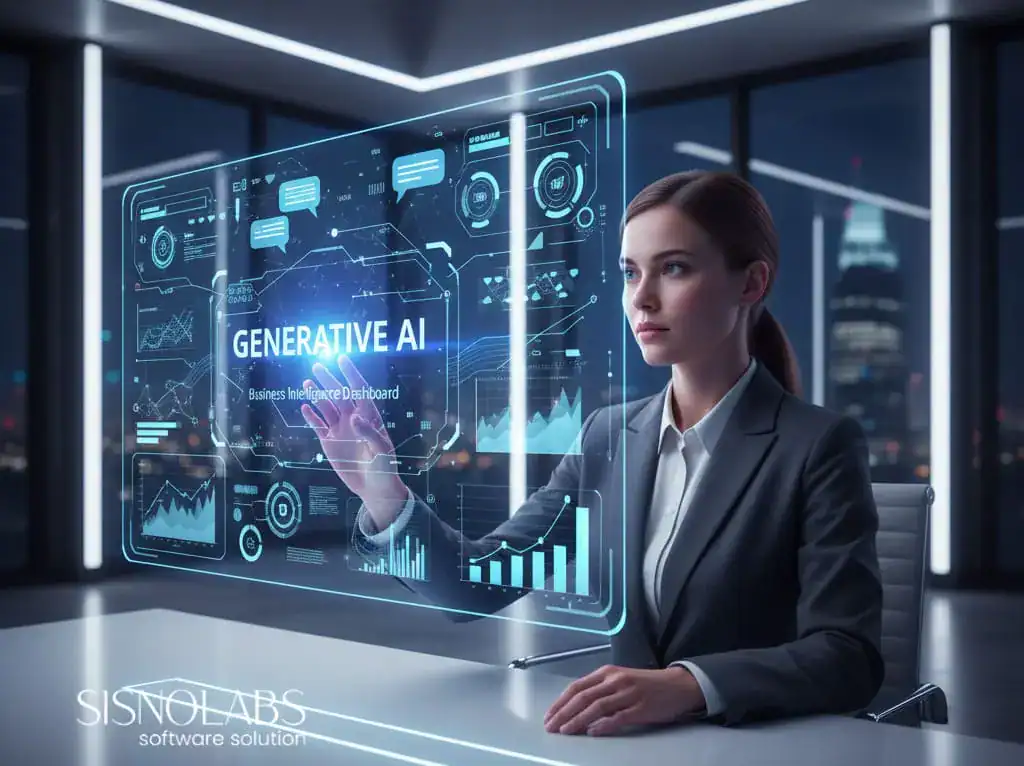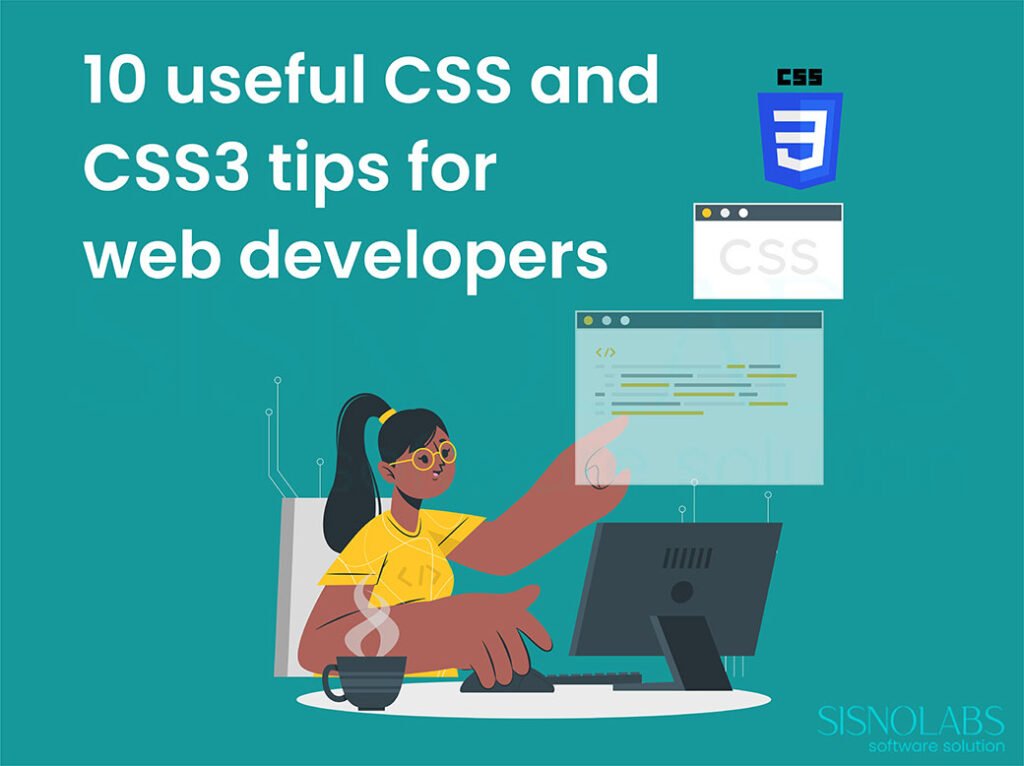Let’s face it — we’ve reached a turning point in how people interact with technology.
Not long ago, using an app meant tapping buttons, scrolling menus, and following steps that felt like second nature to us as users. But now, thanks to Generative AI, those old habits are quickly fading.
Instead of learning how to use an app, the app is now learning how to understand you.
Welcome to the new era of intent-based user interaction, where artificial intelligence doesn’t just execute commands, it interprets, predicts, and even collaborates with you to get things done.
You might like: Top eCommerce Website Builders for Small Businesses & Startups
The New Era of Generative AI and User Experience
So, what exactly is Generative AI (GenAI)?
In simple terms, it’s an advanced form of AI that creates text, images, videos, code, music, or even entire reports based on what you tell it. You don’t need to master buttons or menus anymore; you simply express your intent, and AI figures out the rest.
A 2024 Salesforce survey revealed that 45% of U.S. adults already use generative AI daily, which is an astonishing adoption rate for such a new technology. Clearly, we’re not talking about the future, this shift is happening right now.
Traditionally, UX design was all about simplifying interaction through familiar patterns, cleaner menus, better navigation, smoother transitions. But with generative AI, the conversation has changed completely.
Now, users can:
- Ask in natural language: “Show me last month’s revenue by region” instead of navigating 10 dashboards.
- Set goals, not steps: “Draft a marketing email for new customers” and the AI handles structure, tone, and layout.
- Request explanations: “Why did sales drop last week?” and get an actual, data-backed answer.
- Use multimodal input: voice, text, images, and even gestures.
- Collaborate instead of command: users talk to systems that understand and adapt in real-time.
Until now, we were the ones adapting to software. We memorized workflows and learned “how the system thinks.” But with GenAI, the tables have turned software is adapting to how humans think.
The Big Shift: From Tools to Partners
This transformation isn’t just cosmetic. It’s changing the very nature of how people interact with digital products.
Previously, software was a tool something you controlled step by step. Now, it’s a partner one that understands context, suggests improvements, and takes initiative.
Imagine managing an e-commerce platform:
Instead of manually sorting product data, you can simply say,
“Find underperforming products and suggest price adjustments.”
And the system doesn’t just give you data, it interprets patterns, applies logic, and returns actionable insight. That’s the power of GenAI.
This shift is what experts call the move from “features” to “fluency.”
It’s no longer about how many buttons or dashboards your app has, it’s about how naturally it understands and responds to the user’s goals.
How Generative AI Is Changing UI Principles for Business Apps
Generative AI is rewriting the rules of design, functionality, and user expectations.
In 2025, users don’t compare your product to your competitors, they compare it to ChatGPT, Midjourney, or Perplexity.
They expect smooth, conversational, intelligent interaction everywhere.
Let’s explore the core shifts happening right now:
1. Designing for Intent, Not Features
Old UX logic: users click features to achieve results.
New logic: users express goals, and the system figures out how to get there.
For instance, instead of a 5-step HR form, an employee might simply type:
“Add a new team member with access to marketing tools and onboarding checklist.”
The system interprets that and executes multiple background actions automatically.
2. Embedding Intelligence into the Flow
Generative AI isn’t a chatbot bolted on top of your UI. It’s the engine that shapes every action.
Smart business apps now anticipate user needs, autocomplete tasks, suggest next steps, and adapt dynamically based on prior interactions.
This embedded intelligence ensures users spend less time searching and more time accomplishing.
3. The System Takes Initiative
A modern AI system doesn’t wait for you to ask perfectly.
It might say:
“Did you mean to include last week’s sales report in your presentation?”
Or:
“Your campaign budget looks low for this reach goal, want me to adjust it?”
This proactive collaboration creates trust and saves time.
4. Multimodal Interactions Are the New Standard
Typing is just one way to communicate.
Users now upload images, dictate commands, or even show AI what they mean.
For example, a designer might upload a rough sketch and say:
“Make this look like an Apple-style product page.”
And GenAI delivers a working prototype.
5. Persistent Memory and Context
Imagine an app that remembers your preferences, mistakes, and goals, and uses that knowledge the next time you log in.
That’s what generative AI enables.
Apps now preserve context and intent across sessions, meaning no more starting over every time.
6. Redefining Team Ownership
Traditionally, teams were split, design handled UX, engineers handled logic.
Now, GenAI introduces a new layer, the intent interpreter.
This layer doesn’t just take orders; it decides what the system should do based on what the user means.
That requires tight collaboration across teams, merging design, logic, and data science into one continuous workflow.

Building Business Apps That Leverage Generative AI
If you’re developing or upgrading your business app in 2025, you can’t treat GenAI as a fancy add-on. It has to be part of the system’s foundation.
Here’s how to make it work, and avoid common pitfalls.
1. Treat User Input as Intent, Not Instructions
People don’t think in rigid commands. They change their mind mid-sentence, mix media, or reference past interactions.
Your app should interpret these imperfect inputs into structured, meaningful actions. That’s how it becomes human-friendly.
2. Use Negotiation Logic
When AI is unsure, it should clarify, not guess.
For example:
“Just to confirm, should I send this email to the entire team or only marketing?”
This kind of back-and-forth builds confidence and avoids costly automation errors.
3. Design for Native Multimodality
Your users might type, talk, upload, or even scan.
Generative AI should handle all these input types seamlessly, voice for convenience, text for clarity, images for creativity.
4. Ground Every Output in Real Logic
A GenAI system shouldn’t promise what it can’t do.
Every suggestion must be tied to real backend logic, connected to APIs, workflows, or data sources.
If it suggests something impossible, the illusion of intelligence collapses.
5. Align AI with Real Execution
When users take actions (like approving payments or launching campaigns), AI must trigger real workflows safely.
If AI stalls or gives vague instructions, it should gracefully fall back to rule-based logic, ensuring business continuity.
6. Build Shared Memory Across Layers
Users hate repeating themselves.
Your AI system should remember context across screens, sessions, and even devices.
If a user starts a task on desktop and continues on mobile, the AI should recall the conversation and pick up exactly where it left off.
7. Prepare the Infrastructure
GenAI features require a strong technical backbone.
Latency, security, and context management all affect how “smart” the app feels.
Without the right infrastructure, even the best AI model becomes slow or unreliable.
8. Test What Breaks, Not Just What Works
AI systems must be tested for ambiguity, not just for accuracy.
Run simulations with incomplete prompts, vague inputs, or contradictory requests.
See how the system clarifies and recovers without losing user trust.
Key Features of Generative AI in Business Apps (2025)
| Feature | Description | Impact |
|---|---|---|
| Intent Recognition | AI understands goals instead of commands | Simplifies complex workflows |
| Natural Language Interface | Users talk or type casually | Reduces learning curve |
| Contextual Memory | Keeps track of past interactions | Creates personalized experiences |
| Multi-modal Input | Accepts voice, text, images | Expands accessibility |
| Proactive Assistance | AI offers help before being asked | Boosts productivity |
| Smart Automation | Executes multi-step actions | Saves time and human effort |
| Adaptive UI | Adjusts interface dynamically | Increases engagement |
✅ Pros and ❌ Cons of Generative AI in Business Apps
Pros
- Simplifies complex processes – No more step-by-step forms; AI handles it.
- Boosts productivity – Fewer clicks, faster results.
- Enhances user experience – Feels intuitive and human-like.
- Encourages engagement – Conversations feel natural and rewarding.
- Improves personalization – Learns from each interaction.
- Bridges technical gaps – Even non-experts can use advanced tools easily.
Cons
- Data privacy concerns – Sensitive business info needs careful handling.
- Dependence on AI accuracy – Mistakes in interpretation can cause errors.
- Infrastructure cost – Requires strong servers and reliable models.
- Ethical considerations – Transparency in AI decisions remains crucial.
- Learning curve for teams – Businesses need to rethink workflows and team roles.
The Future of Generative AI and User Interaction
Looking ahead, the boundary between humans and software will continue to blur.
Soon, apps won’t just “understand” us, they’ll anticipate what we need.
Imagine:
- CRM drafting proposals before you ask.
- Your accounting app summarizing insights in plain English.
- Your project management tool assigning tasks based on past team habits.
In short, apps will become collaborators, not just digital tools.
How Geniusee Helps Businesses Build AI-Driven Experiences
At Geniusee, we help teams move from AI experiments to AI excellence.
Whether you need end-to-end development or help connecting GenAI to your existing business logic, we make sure it’s built right, scalable, reliable, and human-friendly.
We help companies:
- Connect GenAI to real backend workflows.
- Design UX around how users actually think and behave.
- Build memory-enabled systems that perform under pressure.
- Turn vague user inputs into structured, real actions.
- Deliver consistent, intelligent, and natural user experiences.
The goal isn’t just to add AI features. It’s to create systems that feel alive, systems that think with you, not for you.
Final Thoughts
Generative AI is more than a buzzword, it’s the new language of interaction.
It’s transforming business apps from static systems into living collaborators that learn, adapt, and act intelligently.
As 2025 unfolds, the winners in this space won’t be those with the flashiest features, but those whose apps feel effortless, conversational, and human.
Because in the end, the future of technology isn’t about replacing people.
It’s about making technology feel more like people.



